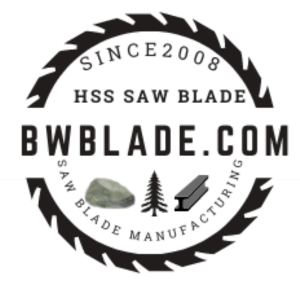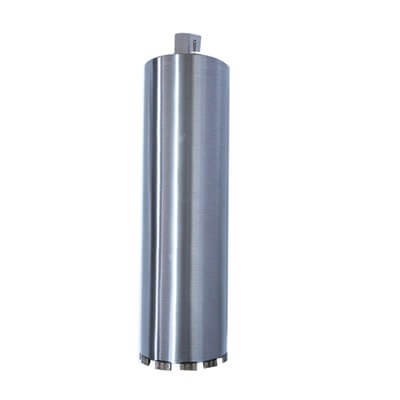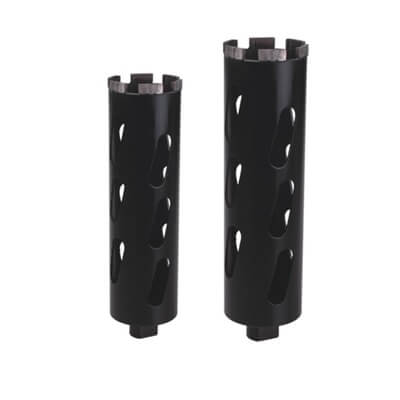
Diamond core drill bits are specialized tools designed to create precise, circular drill holes in very hard materials. Understanding how to properly use a diamond core drill bit is crucial for achieving efficient and clean results, whether you are working with concrete, masonry, or other tough materials. This guide will walk you through the key aspects of using these tools effectively.

A diamond core drill bit is a specialized type of drill bit designed to drill a hole by removing a cylinder of material, leaving a core behind. These drill bits feature diamond segments brazed onto a steel tube, providing the cutting edges. The diamond core bit is used with a core drill or a drill motor specifically designed for core drilling. Unlike a standard drill bit that grinds away at the material, a diamond core drill bit cuts a clean, precise hole, making it ideal for applications where accuracy and minimal damage are essential. The diamond core allows for drilling through hard materials with relative ease.
Several types of diamond core drill bits are available, each suited for different applications and materials. Some diamond drill bits are designed for wet drilling, requiring a water supply to keep the bit cool and reduce dust, while others are for dry drilling. The types of diamond used also vary, with some bits featuring synthetic diamonds for general use and others using more durable, high-grade diamonds for tougher materials like reinforced concrete or hard stone. Choosing the right type of core bit is crucial for efficient drilling and extending the life of the diamond tools. Many of the bits available feature variations in diamond segments to increase its longevity.
Diamond core drill bits are used in a wide range of applications due to their ability to drill through hard materials with precision. They are commonly used in construction for creating holes for pipes, wiring, and ventilation systems. In geological exploration, diamond core bits are essential for extracting core samples from rock formations. Additionally, these core drill bits are frequently employed in demolition work for controlled demolition and in the installation of rebar and anchors in concrete structures. Their ability to drill precise, clean holes makes them indispensable in any situation where you need to drill a hole through tough materials like concrete or masonry with minimal impact on surrounding structures.

Selecting the appropriate drill motor is paramount for effective diamond core drilling. A standard drill or a hammer drill may not suffice; instead, a specialized core drill motor is necessary. These drill motors are designed to deliver the optimal drill speed (RPM) and torque required for cutting through hard materials such as concrete core and masonry. Consider the size of the diamond core drill bit you plan to use and the material you will be drilling. Using the right tool will significantly impact the drilling process and the longevity of both the drill motor and the diamond drill bit. Different bits available have different requirements, so understanding your needs helps to select the proper motor.
Before you start drilling, gather all essential equipment and safety gear. This includes the diamond core drill bit, the core drill motor, a water source for wet drilling (if applicable), and appropriate safety equipment. Crucially, you'll need personal protective equipment, such as:
If you are drilling overhead, wear a hard hat. Ensuring you have all the necessary gear beforehand will make the drilling process safer and more efficient. Safety should always be the first priority when dealing with power tools and tough materials.
Properly setting up your work area is vital for safe and efficient core drilling. Ensure the area is clear of obstructions and that you have ample space to maneuver the drill motor. If you are using water for wet drilling, ensure there is a way to manage the water runoff to prevent slipping hazards. Secure the material you are drilling to prevent it from moving during the drilling process; this may involve using clamps or a sturdy base. If you're drilling into a wall, check for any hidden pipes or wiring to avoid damage or injury. A well-prepared work area can significantly improve the accuracy and safety of your drilling operation.
To start drilling with a diamond core drill bit, first, ensure your drill motor is securely attached to the core drill stand. Position the diamond core bit precisely where you intend to drill the hole. If using a pilot drill or pilot bit, drill a pilot hole to guide the diamond core bit. Apply steady, even pressure to start the drilling process, avoiding excessive force. This helps the diamond segments engage properly with the hard materials, ensuring a clean and accurate start. Different bits available vary in their starting methods.
Maintaining the correct drill speed (RPM) is crucial for efficient core drilling. Refer to the manufacturer's recommendations for the optimal drill speed for your specific diamond drill bit and the type of material you are drilling. Too slow a drill speed can cause the diamond bit to glaze over, while too fast a drill speed can overheat the diamond tools and reduce its lifespan. Adjust the drill motor's speed accordingly to achieve a smooth, consistent cutting action. Finding the right balance with the drill is key for success.
When wet drilling, using water to cool the bit is essential to prevent overheating and extend the life of your diamond core bit. The water not only keeps the diamond segments cool but also helps to flush away debris from the cutting area, ensuring continuous and efficient drilling through hard materials. Ensure a steady flow of water to the diamond drill bit during the entire drilling process. Some types of drill bits are designed specifically for wet drilling. Proper cooling enhances the drilling process and the life of the diamond bit.
Overheating is a common issue when using diamond core drill bits, which can damage the diamond segments and reduce the bit's lifespan. To prevent overheating, ensure you are using water for wet drilling and maintaining the correct drill speed. Avoid applying excessive pressure; let the diamond core do the work. If the diamond bit starts to overheat, stop drilling and allow it to cool down before resuming. Regular monitoring and appropriate cooling techniques are vital to ensure that the bit may be utilized efficiently.
To extend the life of your diamond core bit, focus on proper maintenance and usage techniques. Several key areas deserve your attention:
Regularly inspect the diamond segments for wear and tear. Consider using a dressing stone to expose new diamond edges when the bit's cutting performance decreases. Store the diamond tools properly to prevent damage. By paying attention to these factors, you can maximize the life of your core bit.
Misalignment during drilling can lead to uneven drill holes and damage to the diamond core bit. If you notice misalignment, stop drilling immediately and reassess your setup. Ensure the core drill stand is stable and properly aligned. Use a pilot bit to guide the diamond core bit accurately. Apply steady, even pressure and monitor the drilling process closely. Correcting misalignment early prevents further damage and ensures the hole is drilled precisely where you need to drill it.







